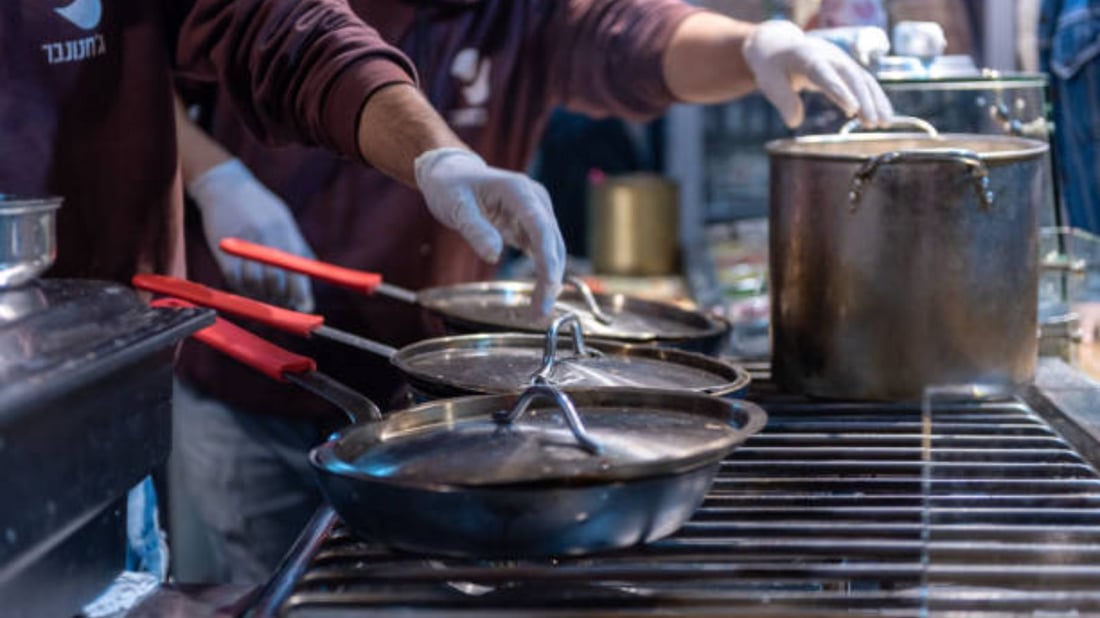Fry, stir-fry, stew, boil: choose the perfect pot for every dish
Choosing the right pot for your cooking needs can make a big difference in the end result of your dish. This article will guide you through the different pots you should use for various cooking techniques such as frying, stir-frying, stewing, and boiling.
Fry
When it comes to frying foods, you want to reach for a pot that can hold high heat without warping or melting. Cast-iron skillets or stainless steel sauté pans are good choices for frying foods over medium-high to high heat. If you’re frying a large amount of food, a deep fryer is a good investment.
Stir-Fry
Stir-frying is all about high heat and quick cooking. A wok is an unbeatable choice for stir-frying, as it allows you to toss and stir the ingredients easily. A carbon steel wok heats up quickly and evenly, giving you that perfect sear every time.
Stew
When it comes to stewing, you need a pot that can distribute heat evenly and maintain a consistent temperature. A heavy-bottomed, enameled cast-iron pot is perfect for stewing. The thick walls of the pot hold heat well, allowing the ingredients to cook slowly and evenly. Plus, the enameled surface makes it easy to clean up.
Boil
Boiling is a cooking technique that requires a pot that can withstand high heat and a lot of water. A large, stainless steel pot with a lid is the best choice for boiling. Look for a pot that can hold at least 6 quarts of water. A pasta pot with a strainer insert is an excellent choice for boiling pasta or vegetables.
Multipurpose Pot
If you’re short on storage space, a multipurpose pot is a great choice. A Dutch oven is a versatile pot that can be used to fry, braise, stew, and even bake. Dutch ovens are made from cast iron or ceramic and are an excellent choice for making stews or slow-cooking meat.
Materials Matter
When choosing a pot, the material matters. Cast iron, stainless steel, and carbon steel are all excellent choices for cooking over high heat. Enamel-coated pots are perfect for long, slow cooking. Copper pots are expensive but offer excellent heat conduction, allowing for precise temperature control.
Sizes and Shapes
The size and shape of a pot can influence how well it cooks food. Small pots are perfect for cooking rice, while larger pots are better suited for cooking soups and stews. The shape of a pot can also affect how well it cooks. Tall, narrow pots are great for cooking pasta, while wide pots are perfect for stir-frying or searing meat.
Cleaning and Maintenance
After cooking, cleaning and maintaining your pots is essential. Always read the care instructions that come with your pot. Cast-iron pots require seasoning and should never be put in the dishwasher. Stainless steel pots can be washed in the dishwasher but may show scratches over time. Enamel-coated pots should be washed by hand with a non-abrasive sponge.
Investing in Quality Pots
Investing in quality pots is essential if you want to produce delicious results in the kitchen. Good-quality pots are durable and can last a lifetime. Plus, they will save you time and money in the long run, as you won't have to replace them as often. Choose pots that are versatile and can be used for multiple cooking methods to get the most out of your investment.
Conclusion
Choosing the right pot for your cooking needs is essential for producing delicious results. When it comes to different cooking methods like frying, stir-frying, stewing, and boiling, there are different pots that are better suited for each method. Consider the material, size, shape, and maintenance of a pot before investing in one. By choosing quality pots and taking care of them properly, you will be able to produce delicious meals for years to come.

